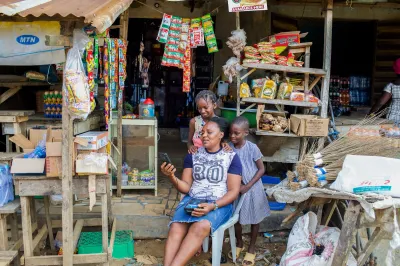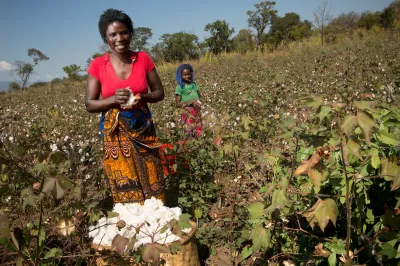Gender & Geography: Women-Owned SMEs in the Middle East
Women entrepreneurs in the Middle East face far greater challenges than men when trying to access financial services. This is especially concerning, as many of the sectors that are critical for economic growth in the region rely heavily on women.
In emerging markets worldwide, small and medium-sized enterprises (SMEs) with female ownership represent 30% to 37% of all SMEs – that’s 8 million to 10 million women-owned firms. These business women have unmet financial needs between US$260 billion and $320 billion a year, their single biggest barrier to growth and development. In the Middle East, however, the situation is even worse: Women owners account for only 14% of all SMEs in the region, the lowest rates in the world outside South Asia.
While the delivery of affordable banking services to large sections of low-income groups is improving, significant concerns persist that banks are still not providing basic services to poor people, women, and those who are both, especially in the Middle East. Navigating this terrain is particularly crucial given that women’s movements in the Middle East are very often restricted because of cultural traditions and religious practices.
I work on the Jordan Loan Guarantee Facility, supported by USAID and OPIC, and much of our efforts are designed to specifically support women-owned SMEs, not only expanding their access to financial services so they can build their businesses, but also providing training and other support services. From our experience since 2012, we have been able to learn important lessons in how to assist women across the Middle East and beyond.

How to support women-owned SMEs in the Middle East:
- Meet women on their terms. Banks, microfinance institutions, and credit unions must be more physically accessible to women. Locations that are easy to access and welcoming to women are a crucial first step, but simply building more branches does not mean that women will use them if differing needs, knowledge, and cultural norms are not taken into account. Products such as credit, savings, insurance, internet and mobile banking should be customized to the unique needs of women entrepreneurs, and the environment itself should be accommodating, employing, for example, female tellers and loan officers.
- Counter discrepancies in education and training. The difference in education levels between women and men in the Middle East often stifles female business owners, affecting the likelihood of women starting a business of their own as well as survival of women-owned SMEs. Loan officers must be trained to identify loan structures that best suit the woman business owner's situation, conduct financial projections on a regular basis, and build up women’s financial management through workshops and one-on-one coaching to help address this education gap.
- Respect culture and tradition, but break down barriers. Social norms, which dictate the roles of men and women in family, workforce and society, can adversely affect women’s capability to start and nurture their businesses. The definition of “suitable” jobs for women often limits them to lower-paid, less promising sectors, resulting in lower incomes. Even profitable and successful women entrepreneurs are frequently urged to invest business profits back into their family, rather than use it to grow their firm. By educating banks, women entrepreneurs, and their families on the value of women-owned businesses for an economy, and encouraging each side to take small, calculated risks, perspectives can begin to change. This is especially the case when women demonstrate significant business successes and celebrate these with their families and peers. Lenders should also provide networking opportunities to encourage effective exchange of information and capital with peers and banks, as well as women sharing their experiences to encourage others to apply for credit.
- Counter collateral and ensure fair loans with guarantees. To secure credit, borrowers often need to put down collateral. But women-owned SMEs may not be able to secure sufficient collateral to qualify for a bank loan because they are newer to the business. Social investors should consider offering loan guarantees, as these help to provide banks with comfort and demonstrate the credit-worthiness of women-owned SMEs. The Jordan Loan Guarantee Facility, for example, offers 75% loan guarantees to female business owners across the board, whereas for other clients the rate varies from 60-75% depending on their locations. This change brought such an increase in female applicants that two partner banks created new products with collateral and interest rates specifically tailored to the needs of women borrowers. Since its inception, the Jordan Loan Guarantee Facility has guaranteed loans to 47 women’s SMEs worth $5.3 million, with no failure to repay.
Making credit more readily available to women-owned SMEs in the Middle East takes a double approach, focusing on both culture and capacity, lenders and loan recipients. In order for banks to be able to make loans based less on collateral it requires them to build their capacity to go beyond the traditional “five C’s” of lending to evaluate loan recipients on two more C’s – concept of the business and competency of the management. That, in turn, requires more training for women SME owners to ensure that they can meet these requirements. If we can do this, we can promote inclusive economic growth throughout the region.




Comments
Thanks for your efforts I am
Thanks for your efforts I am from Iraq
Greetings
How Can I participate?
How Can I participate?
Add new comment